HISAKA WORKS considers how society should be as a sustainable target in light of the social responsibility our company bears in consideration of society’s status now and its forecast state in the future. We also have established what we aim to be as the Hisaka’s 100th Anniversary (2042) Vision and Roadmap.
In particular, with regard to environmental problems, it is expected that problems such as increasing CO2 emissions and water pollution caused by increasing populations and economic growth in developing countries will become increasingly severe, and it is likely that environmental regulations and the like will be more strict. On the other hand, we are also aware that supporting these environmental problems that we face presents an opportunity for new growth, and to that end, we believe that for a sustainable society, we must engage in voluntary and pro-active initiatives for environmental problems as a management issue. We also believe that the disclosure of climate change-related information will be an important theme for dialog with stakeholders in the future.

In this document, we disclose important climate change-related information in line with the TCFD (Task Force on Climate-related Financial Disclosures) recommendations.
Hisaka established a CSR-SDGs Vision that includes matters related to climate change (promotion for reducing CO2 emissions) and we formulated our mid-term and annual plans with awareness of its relevance. We also established a monitoring environment that allows management to summarize the plan or check on its progress at any time.
We established a Sustainability Committee chaired by the President and Representative Director on April 1, 2022, and thereby built a structure in which we discuss a wide variety of critical matters related to sustainability including climate change in cooperation with related departments.
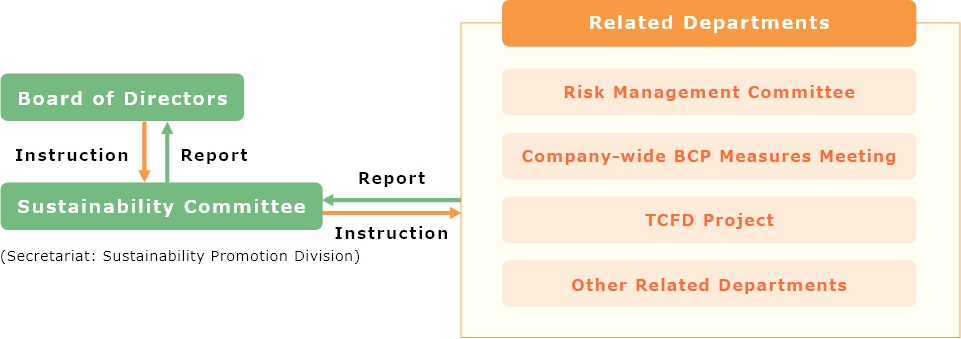
reports the outcome of activities to the Board of Directors, which appropriately supervises various critical matters related to sustainability including climate change.
| Purpose | Agenda | |
|---|---|---|
| 3rd meeting (October 2023) |
Confirm the status of activities for the first half of the fiscal year at the related departments |
Confirm the status of the first disclosure Work toward Scope 3 calculations |
| 4th meeting (April 2024) |
Confirm the status of activities for the second half of the fiscal year at the related departments and summarize the fiscal year plan |
Confirm the status of Scope 3 calculations |
| Role | |
|---|---|
| Board of Directors | Decide and give instructions on the most important matters regarding sustainability promotion |
| Sustainability Committee | Check the status of sustainability promotion progress, give instructions, and evaluate/verify the results |
| Risk Management Committee | Perform risk assessment considering multiple degrees of impact on internal and external environments including climate change |
| Company-wide BCP Measures Meeting | Set responses to disasters and the like that can impact business and promote plans for preventing the interruption/stop of, or quickly restarting, business activities |
| TCFD Project | Clarify the goals and policy for climate change support and organize and disclose related information |
| Other related departments | Promote activities with sustainability awareness through work |
Hisaka consists primarily of three business segments: the Heat Exchanger Segment, Process Engineering Segment, and Valve Segment. Each Segment has different stakeholders, and it is assumed that the risks and opportunities related to climate change also vary. Therefore, we identified and defined risks and opportunities by Segment.
In identifying the risks and opportunities by Segment and by stakeholder, we set the following classifications for investigation:
| Political measures and regulations | Tighter regulations for GHG emissions |
| Market | Change in demand for low-carbon products |
| Technology | Change in energy demand and supply, advancement and spread of next-generation technology |
| Reputation | Change in reputation among stakeholders |
| Chronic | Environmental changes due to global warming |
| Acute | Intensifying extreme natural disastersResource recycling |
Hisaka performs scenario analysis on trends in climate change-related matters.
The table below shows risks and opportunities due to climate change defined based on the results of risk and opportunity identification.
Our three business segments commonly use a large amount of energy throughout the product life cycle from the manufacturing of procured products by our suppliers to the use of our products by our customers. Accordingly, we assume that risks and opportunities in the transitional risk category will arise due to tighter regulations for GHG emissions, changes in demand for low-carbon products, and changes in energy demand and supply.
We define impact on our production bases due to climate change-related disasters as major risks and opportunities in the physical risk category.
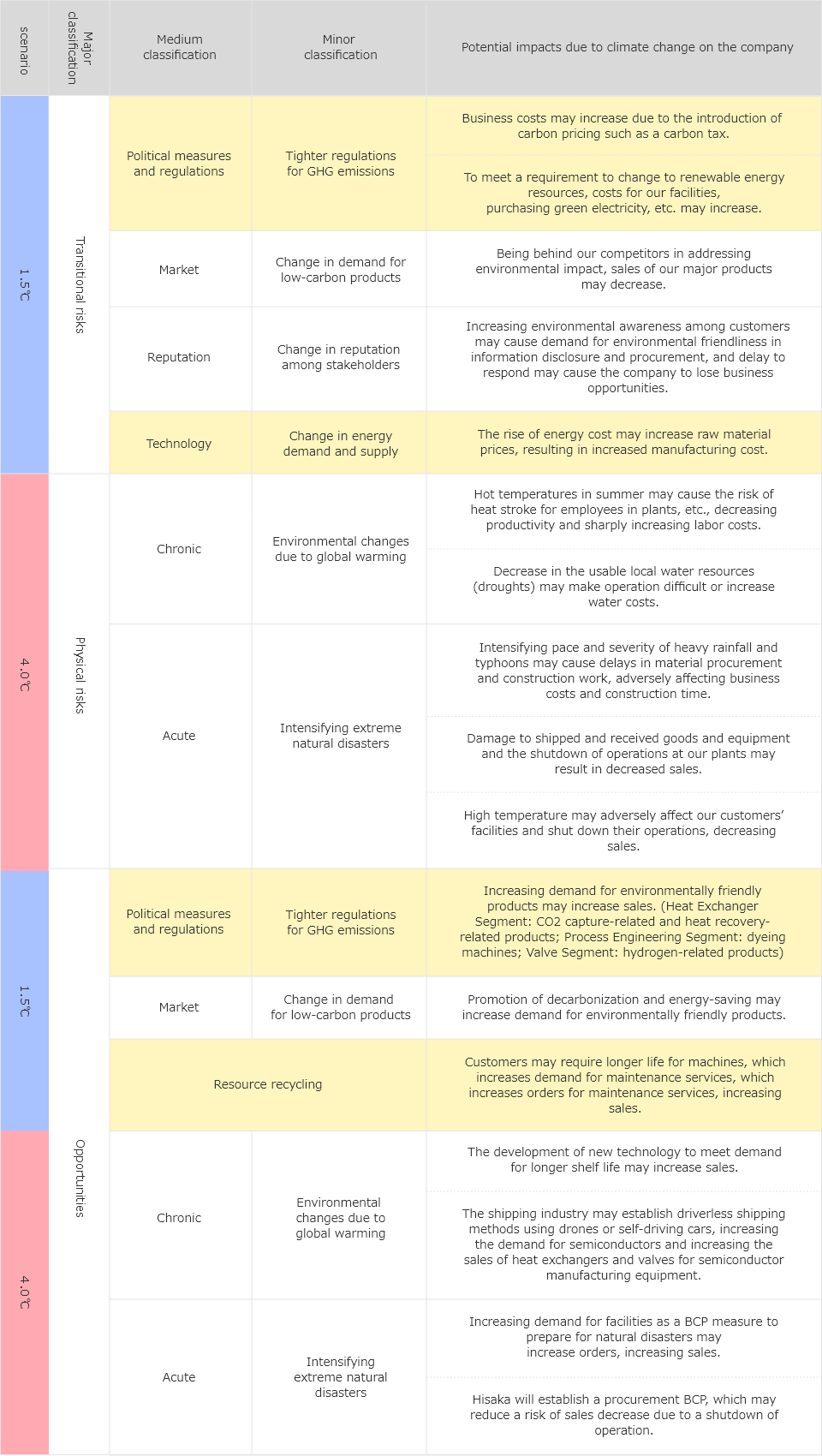
*Risks and opportunities which have potentially significant impact on our business over the medium to long term and are subject to trial calculation of financial impacts are highlighted in yellow.
We have created trial calculations as described below for the potential financial impact if the climate change-related risks and opportunities forecast for each scenario occur.
In making trial calculations, we are focusing on creating the financial impact for risks and opportunities in the 1.5°C scenario to achieve this scenario.
As a result of these trial calculations, we believe that promoting decarbonization in our business and pushing forward environmentally friendly products can improve the financial impact due to climate change, and we will accelerate our activities moving forward.
*The parameters in the following table and in-house information were used to calculate the financial impact.
| Major parameters | Amount of activities | Basic unit |
|---|---|---|
| Carbon tax | Scope 1, 2 emissions | $100/t-CO2 (IEA 2021) |
| Sharp energy cost increases | Energy consumption | 1,620 JPY/MWh (IEA 2019) |
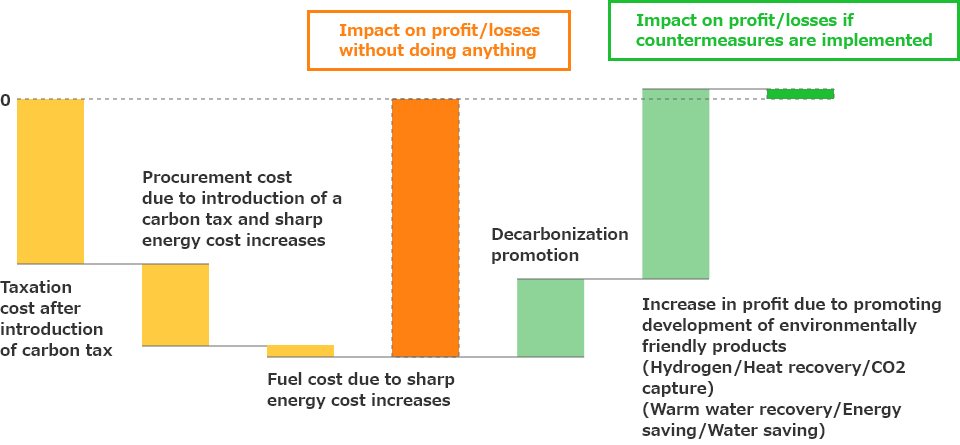
*This is one example of a countermeasure based on the forecast information we recently surveyed.
Moving forward, we will increase the accuracy of our forecast information and investigate various measures such as further promotion for the development of environmentally friendly products.
With regard to the intensifying extreme natural disasters and the environmental changes due to global warming expected in the 4.0°C scenario as well, we will promote responses to improve the financial impact with a focus on promoting BCP including the supply chain and promoting the development of products compatible with environmental changes.
At Hisaka, we have evaluated transitional risks ("Political measures and regulations: Tighter regulations for GHG emissions," "Market: Change in demand for low-carbon products," "Technology: Change in energy demand and supply, advancement and spread of next-generation technology," and "Reputation: Change in reputation among stakeholders") and the physical risks ("Chronic: Environmental changes due to global warming" and "Acute: Intensifying extreme natural disasters") from the two perspectives of "degree of impact on our business and stakeholders" and "possibility of the risk or opportunity," thus selecting the important risks and opportunities.
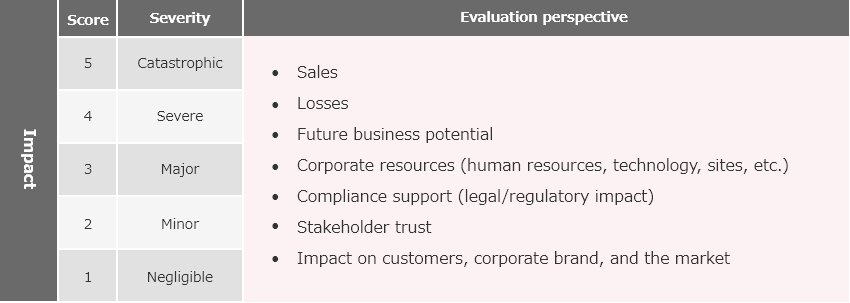
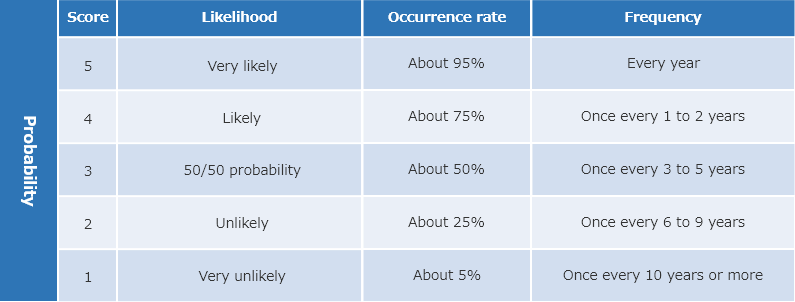
We promotes the initiatives described in the table below for climate change-related risks and opportunities that we have evaluated and defined.
Hisaka established a Risk Management Committee under our Sustainability Committee, establishing a policy for ensuring sustainable business development by practicing risk management as well as for helping to fulfill our social responsibility.
Hisaka identifies major business operational risks including climate change-related risks, under the supervision of the Risk Management Committee, and annually evaluates them based on multiple standards.
Hisaka has set greenhouse gas (GHG)* emissions as a key indicator for our climate change initiative, targeting the achievement of the 1.5°C level defined as our Science Based Targets (SBT) . For Scope1, 2 emissions, we are aiming to reduce GHG emissions by 29% compared to the fiscal year ended March 31, 2023 (a reduction of 4.2% annually) by 2030.
Scope 1,2 Emissions and Reduction Target by 2030
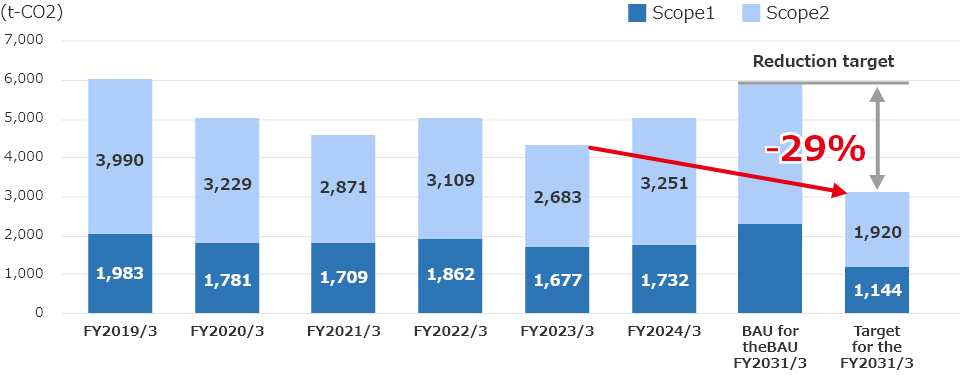
*The BAU emissions for the fiscal year ending March 31, 2031 for setting the reduction target are set based on the CO2 emissions per sales for the fiscal year ended March 31, 2023 and the sales expected for the fiscal year ending March 31, 2031.
*Increase in the fiscal year ended March 31, 2024
- Main causes: Increase due to opening the new Ikoma Plant, impact due to changing the coefficient for CO2 emissions, etc.
- However, we have not revised the target for the fiscal year ending March 31, 2031.
We will carry out activities aimed at achieving our target in accordance with the new roadmap we have established.
In order to clarify our current status and status in the future as we work to address climate change, we have graphed our efforts aimed at decarbonization up to 2050, taking our state during 2013, which was our previous goal, as point zero.
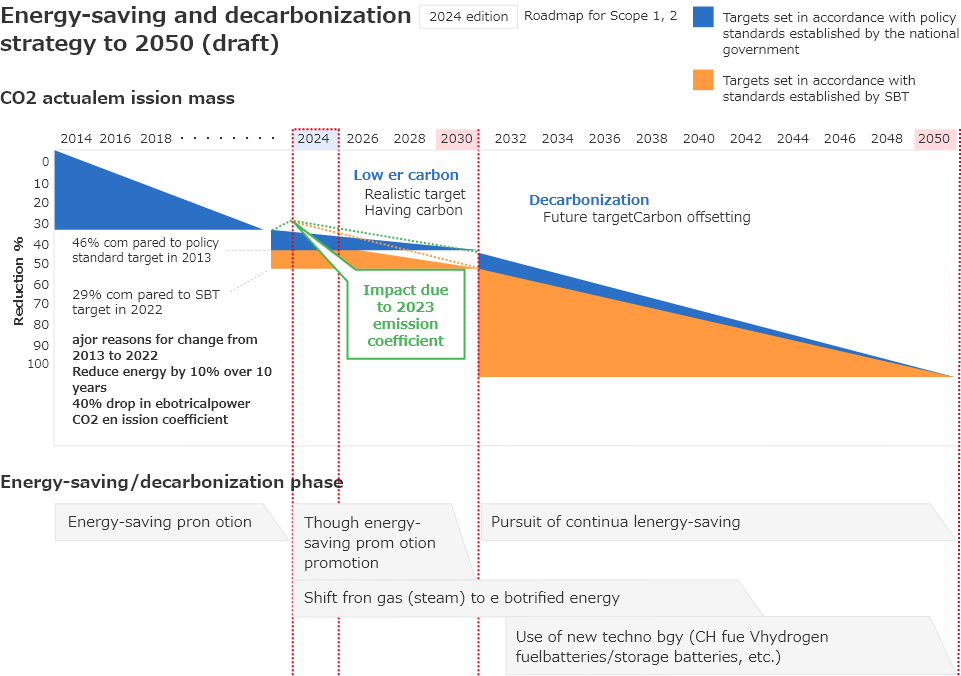
Actual GHG emissions in the fiscal year ended March 31, 2024 (non-consolidated; Scope 1, 2, 3) are disclosed in the table below.
The largest CO2 emissions in Scope 3 are accounted for the use of products.
Our products require steam and electricity when used by our customers, and CO2 emissions generated by the use of steam account for 4.5 times of those by the use of electricity. We are aiming to reduce GHG emissions generated by the use of our products by manufacturing and selling a reduced steam-consumption model.
For category 1, the fact that many Hisaka products use stainless steel and are heavy pushes up the ratio. Therefore, we plan to reduce this by reconsidering the component structure, such as the number of components.
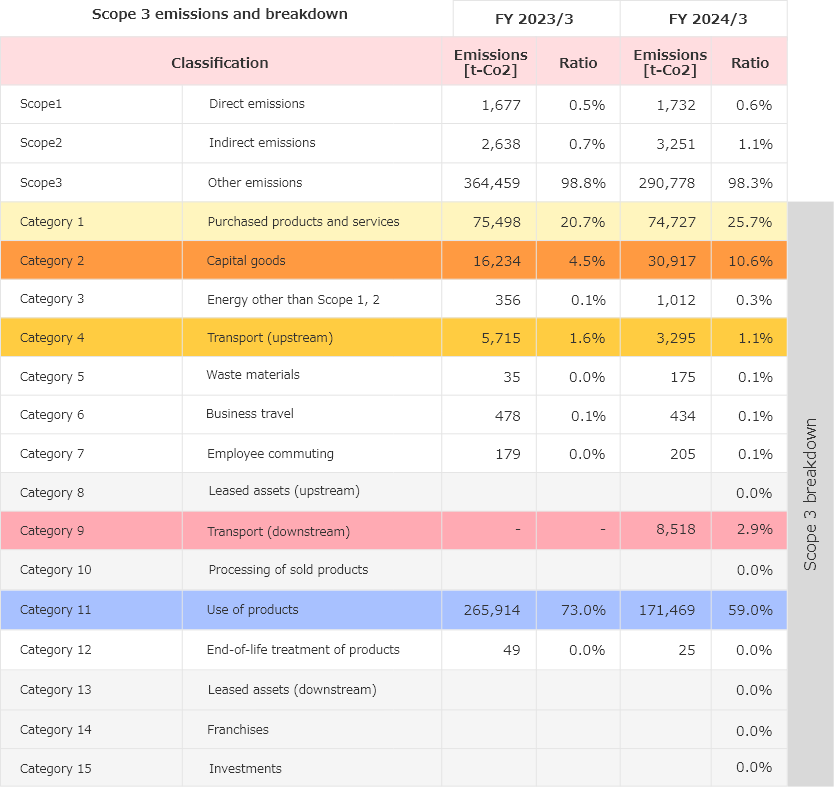
*Category 11 was calculated using 15 years as the service life.
Category 9 was calculated from the FY 2024/3.
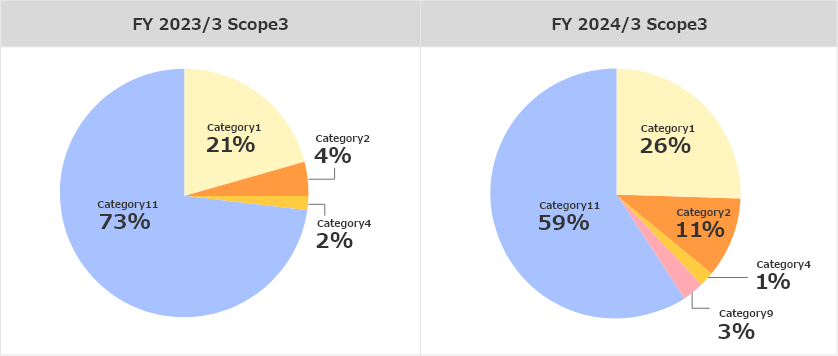
Introduce solar power generation equipment for private
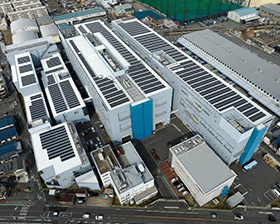 Konoike Plant: 251.8 kW
Konoike Plant: 251.8 kW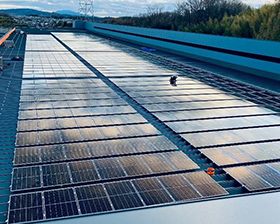 Ikoma Plant: 486.4 kW
Ikoma Plant: 486.4 kW